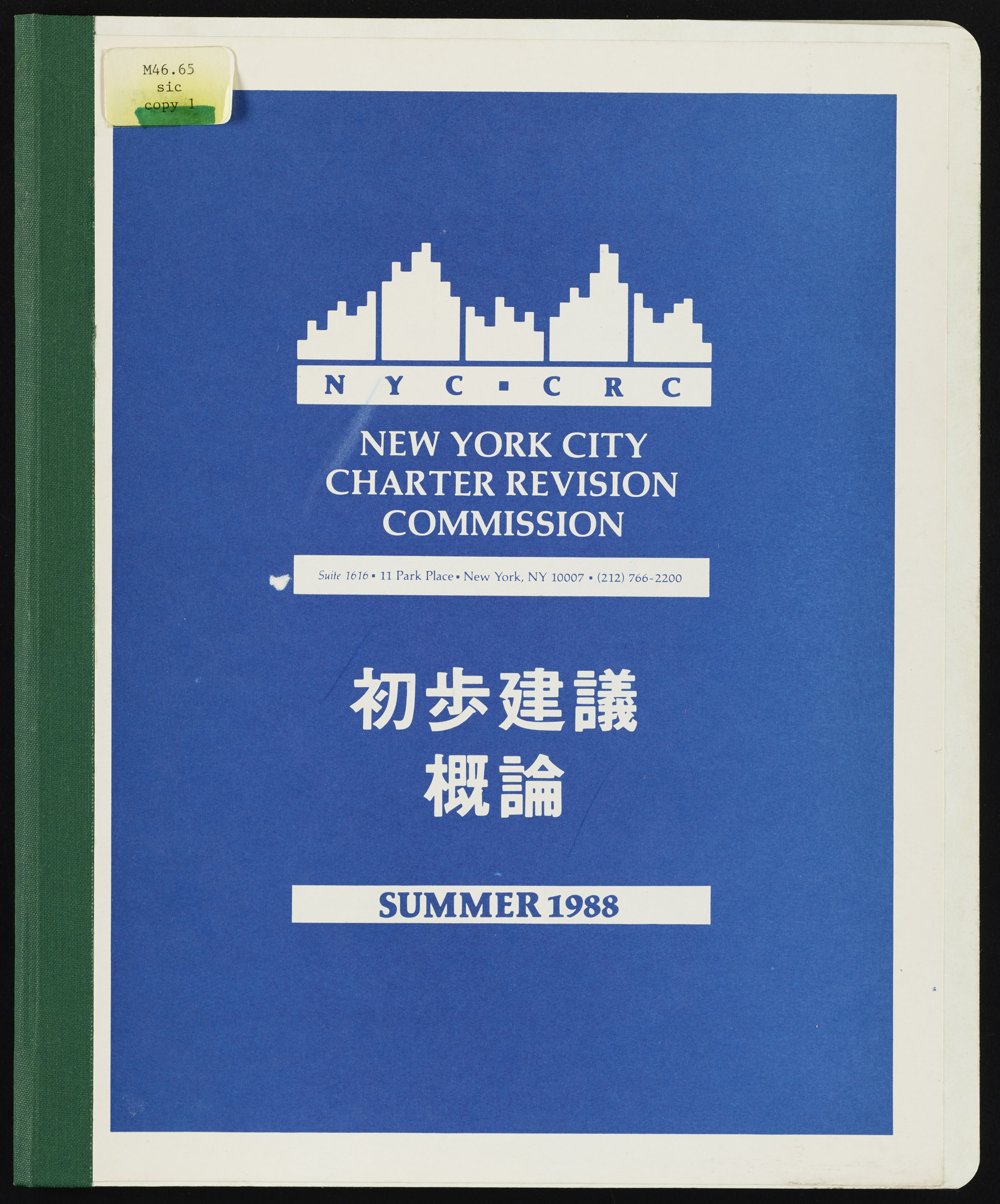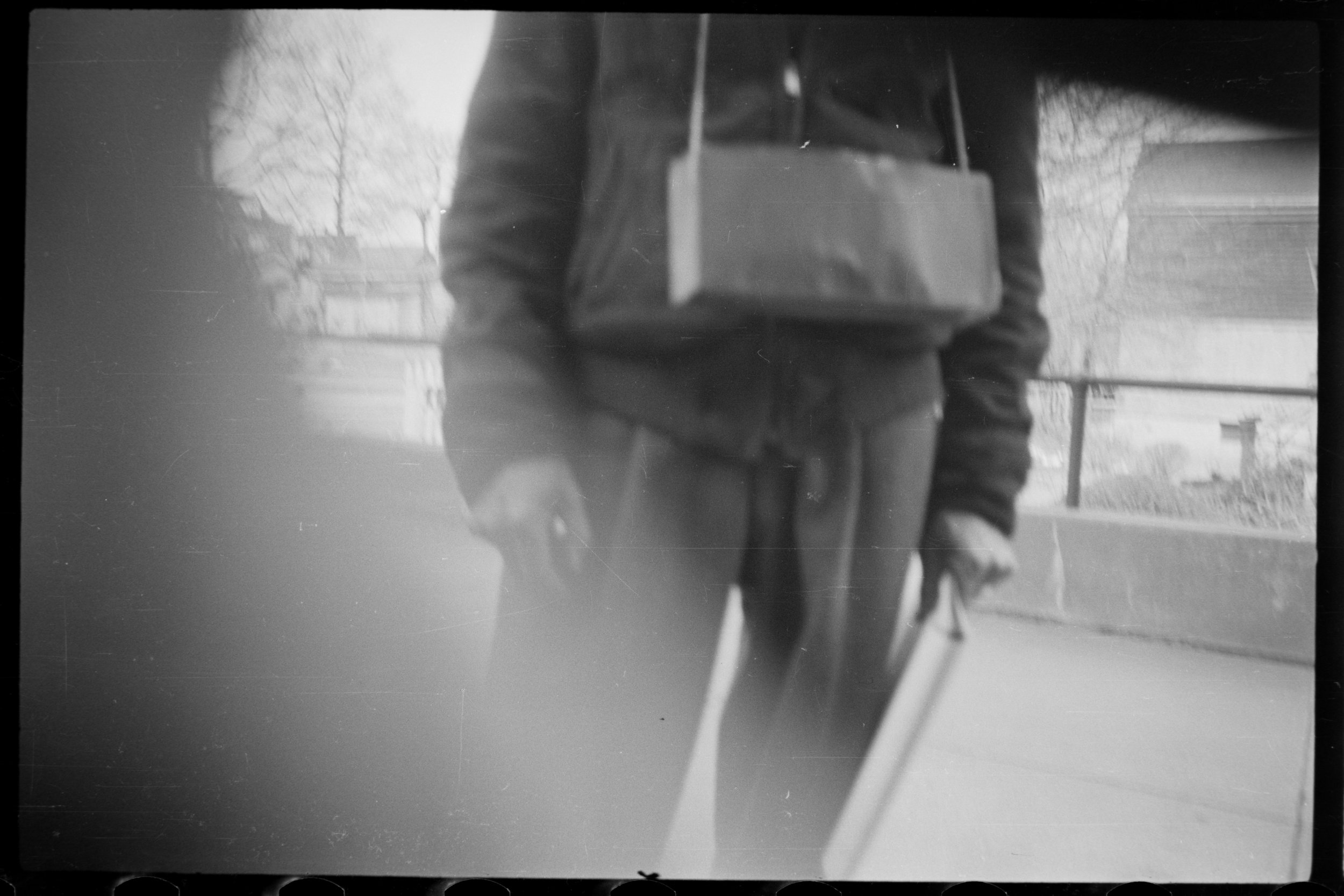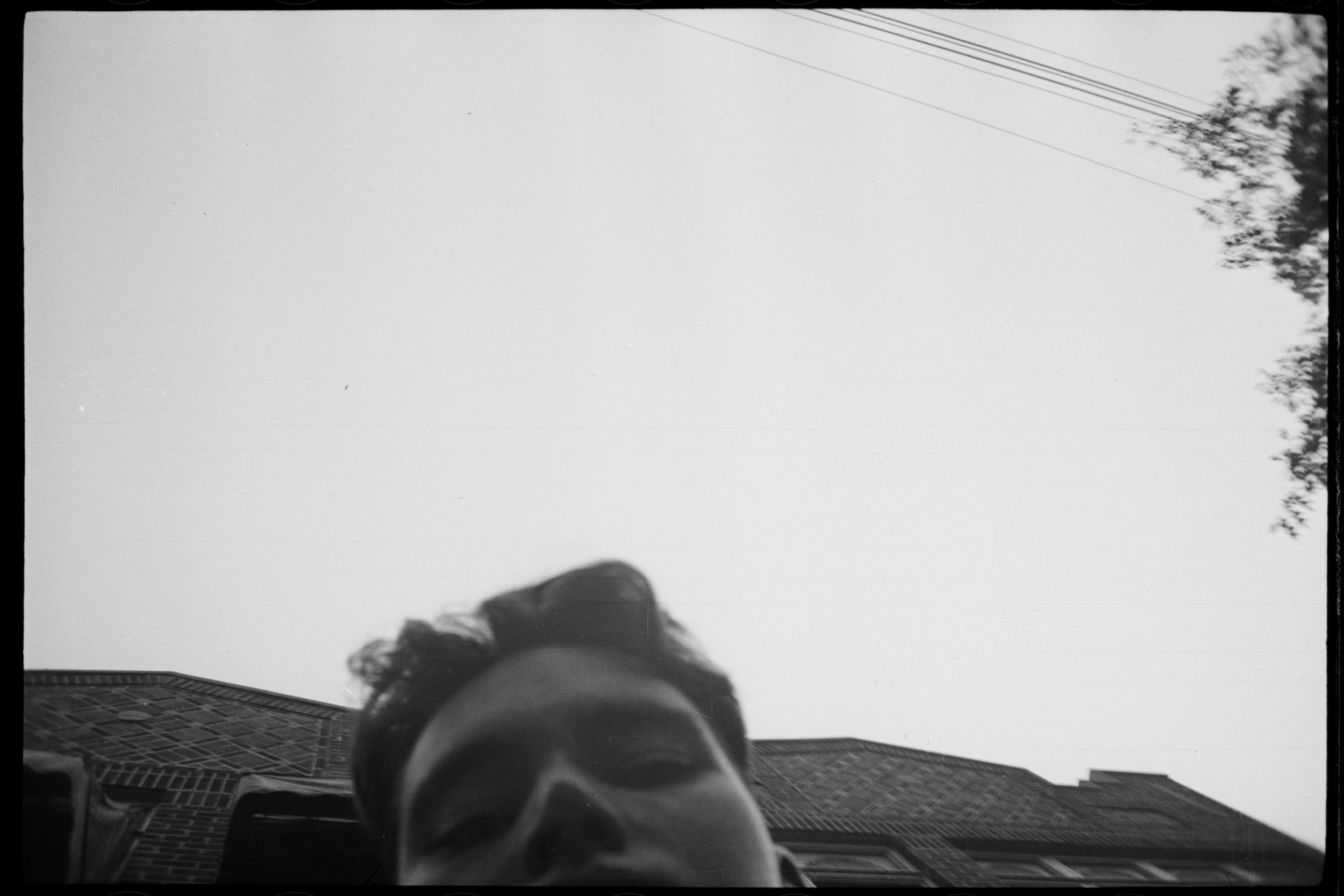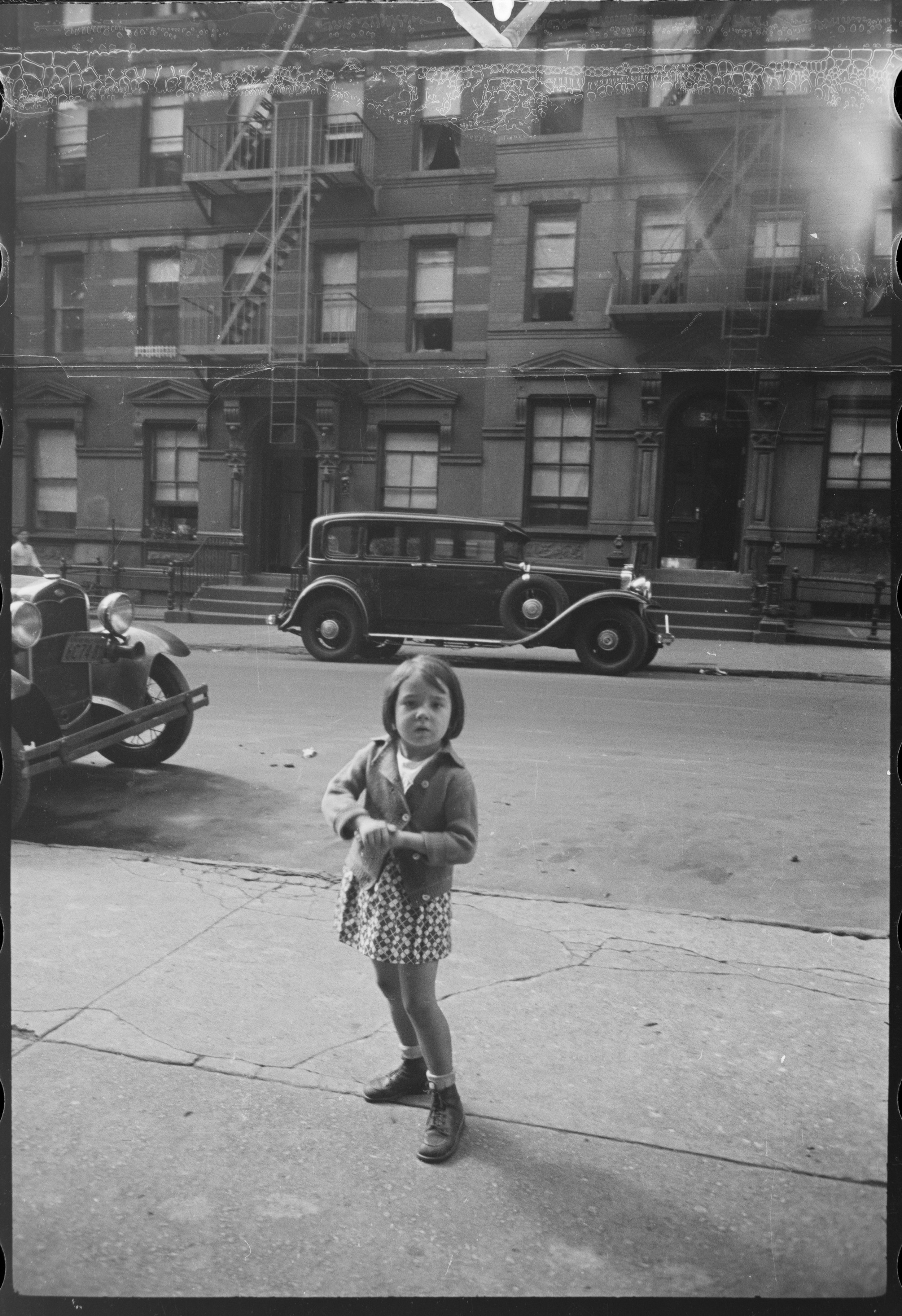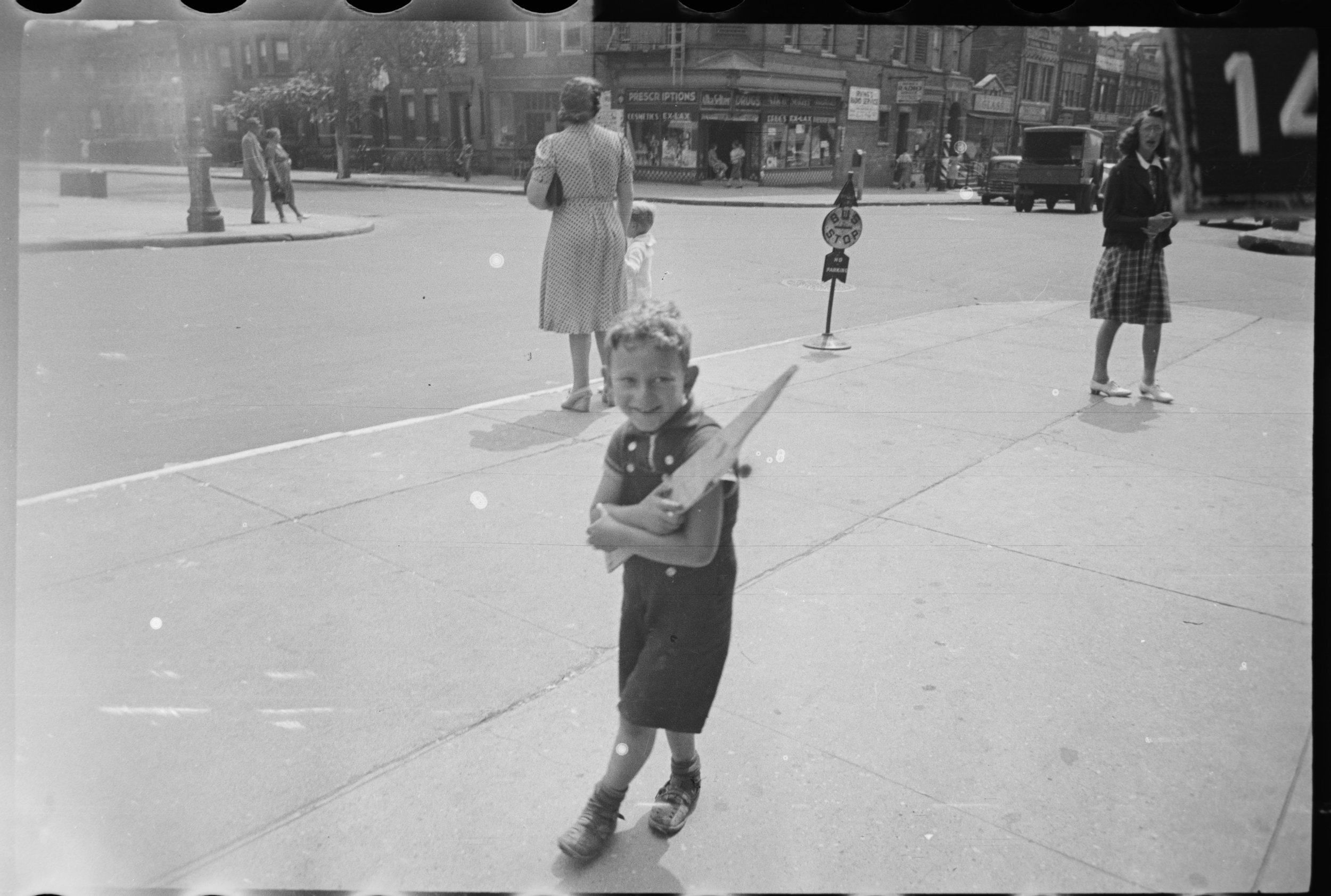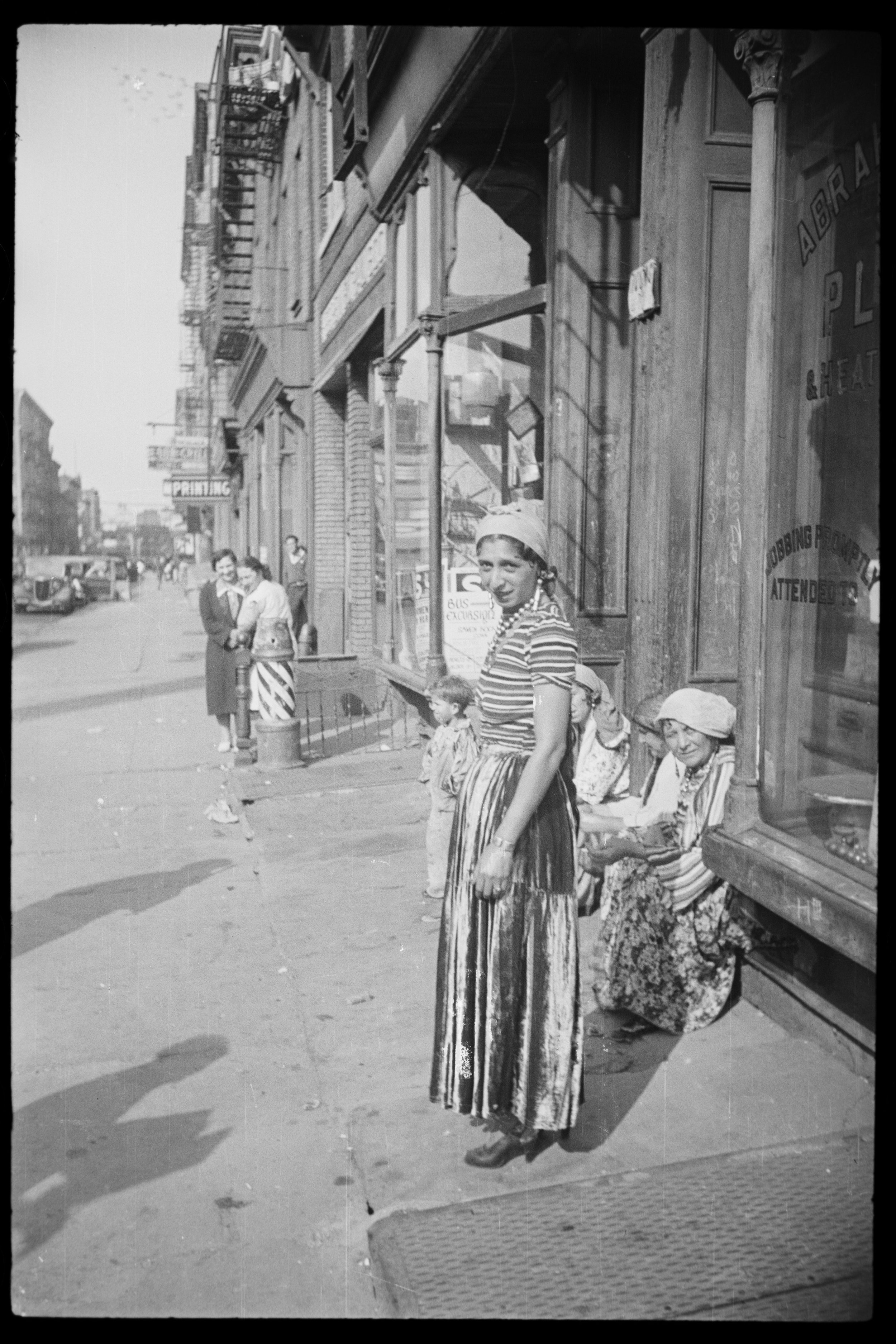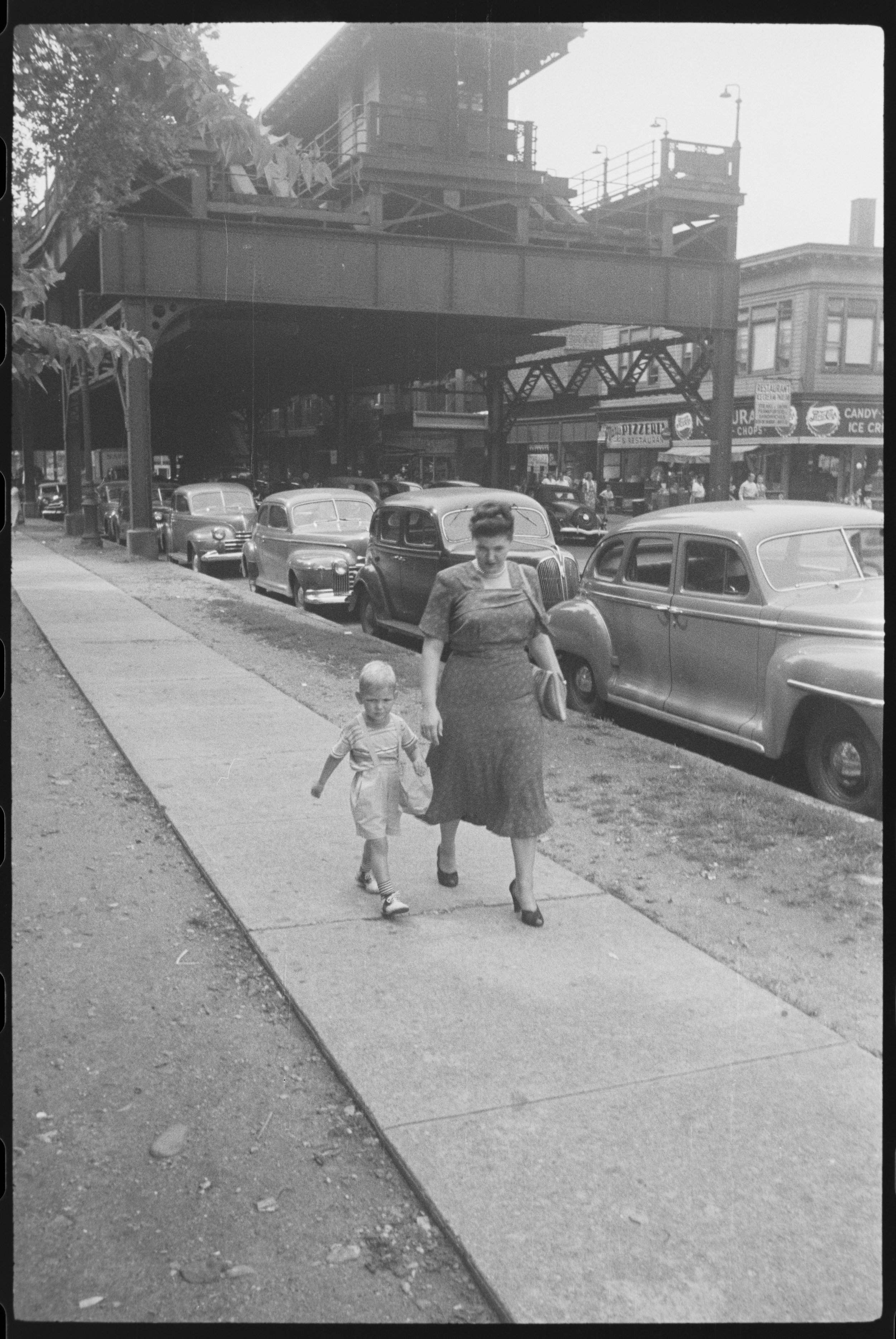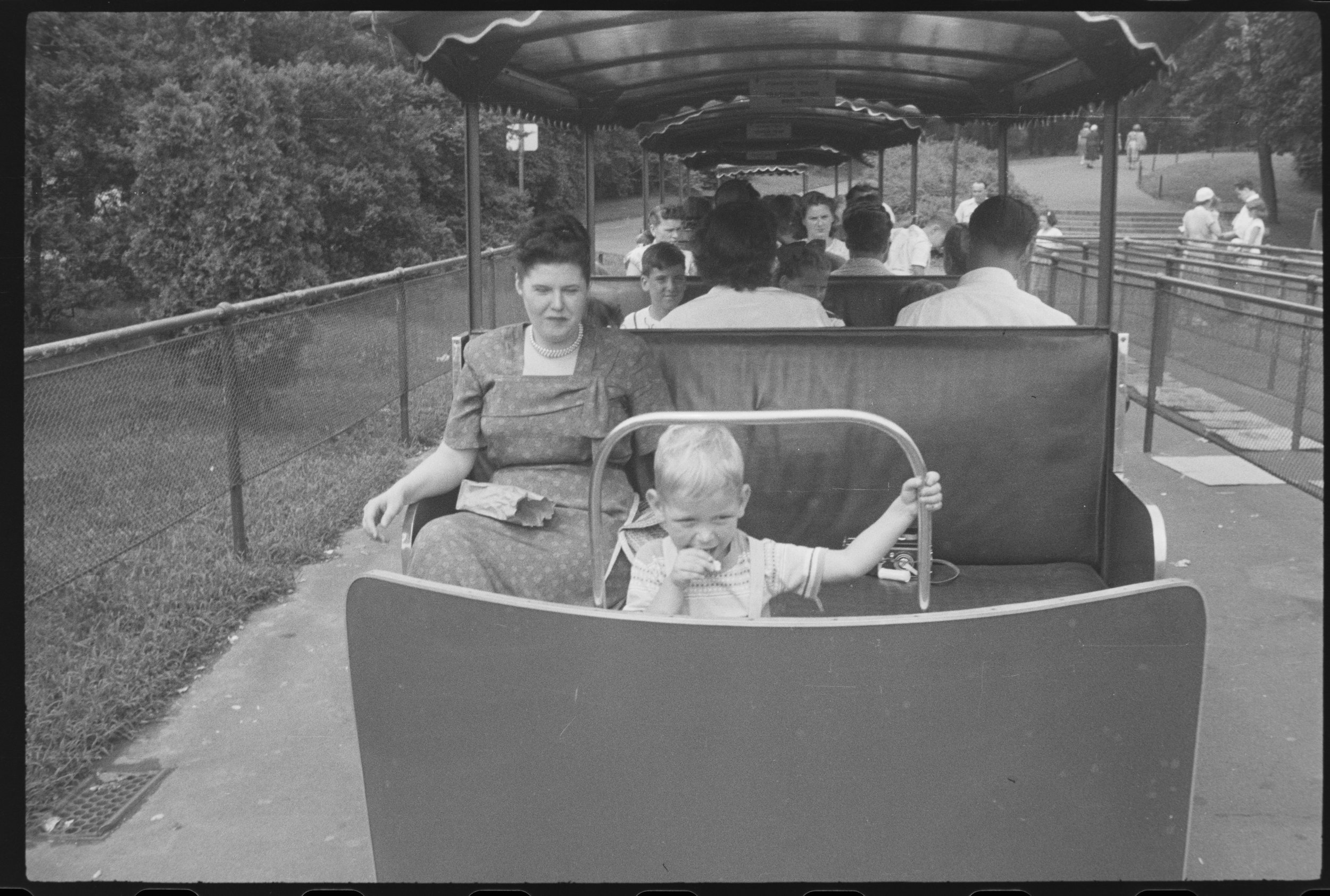The Mayor Fiorello LaGuardia collection contains several folders detailing the work of the Mayor’s Commission on Conditions in Harlem after the 1935 one-day riot.
256 West 125 Street, ca. 1939. The 1935 riot was sparked by an incident at this Kress department store. Department of Finance Collection, NYC Municipal Archives.
On March 19, 1935 a young man was temporarily detained at a Harlem store for shoplifting a knife. A small crowd gathered. Rumors spread that he had been beaten to death in a back room, although in truth he was released out a side door. Communist organizers gave out leaflets tying the incident to broader discrimination against Harlem residents. The crowd grew. A hearse passed by. Rumors flew. One window was broken, then another and soon a melee ensued that continued for most of the evening. Three black men were killed, including another young man who was returning from the movies. More than 100 men were arrested; at least 100 people suffered wounds, chiefly from falling glass and thrown objects; and 250 stores sustained damage.
The next day numerous organizations—many affiliated with the Communist Party—the Fur Workers Industrial Union, Industrial Labor Defense, Branch 41 of the United Councils of Working Class Women, the Alteration Painters Union, the Office Workers Union, the Working People of Amboy and Pitkin—sent sent telegrams denouncing the violence. The telegram below is only one of several sent on behalf of groups of workers gathered at intersections and apparently participating in marches against the violence.
Telegram sent by protesters from the Needle Thread Workers. (The NRA stamp is for the Federal National Recovery Act, not the National Rifle Association.) Mayor LaGuardia Collection, NYC Municipal Archives.
Walter White, the Secretary of the National Association for the Advancement of Colored People (NAACP) sent a telegram with a different message. He urged the Mayor to “appoint immediately a biracial commission to make an investigation of rioting in Harlem last night.… We suggest commission be chosen with due regard for fact that last night’s trouble and possible future trouble are rooted in economic distress of Negroes…”
Telegram from Walter White of the NAACP urging the forming of a citizens committee to investigate conditions in Harlem in order to prevent further trouble. Mayor LaGuardia Collection, NYC Municipal Archives.
Some played the blame game citing communist incitement and invoking racial and ethnic stereotypes. On the other hand, Mayor Fiorello LaGuardia appeared to have heeded White’s recommendation and established a high-level commission to explore the events, examine conditions that contributed to the violence and recommend strategies that might prevent another occurrence. He made a radio appeal to the People of New York City and issued a handout.
Mayor LaGuardia’s appeal to “the People of New York City” the day after the 1935 Harlem Riot. Mayor LaGuardia Collection, NYC Municipal Archives.
Letter from Walter White of the NAACP laying out the proposed investigation questions the committee should follow. Mayor LaGuardia Collection, NYC Municipal Archives.
Walter White, praised the Mayor’s action. He quickly submitted a five-page list of possible research topics for the commission and suggested that prominent sociologist E. Franklin Frazier be retained to conduct the research. White’s questions offer a roadmap to the final report, which was researched and largely written by Frazier. Concluding the list, he wrote, “Done properly this study may not only be of inestimable service to New York City now and in the years to come but to the entire country.”
A description of the Commission stated that it “was composed of persons who either had experience in the community or special interest in the problems involved.” That’s true. Another feature was the ground-breaking backgrounds of several members. One was prominent in the Harlem Renaissance, another was the first black Alderman, and another the first black woman attorney at the Manhattan District Attorney’s Office. Several had founded the NAACP and the American Civil Liberties Union (ACLU). All in all, a stellar group. Lester Stone, Secretary to the Mayor described the group as “predominantly negro, and the white members are intelligent, liberal, and sympathetic.”
Members included:
Charles H. Roberts who served as the Chair and had been the first black member of the Board of Alderman
Oswald Garrison Villard, publisher of the Evening Post and one of the NAACPs founders
Eunice Hunton Carter, the first African-American woman to work as a prosecutor for the Manhattan District Attorney
Countee Cullen, a poet, playwright and novelist who was part of the Harlem Renaissance
Hubert. T Delaney, Commissioner of Taxes and Assessments
Morris Ernst, a prominent attorney and co-founder of the American Civil Liberties Union (ACLU)
John C. Grimley, former hospital director and commanding officer of the 369th Infantry
Arthur Garfield Hays, founding member and general counsel of the ACLU
A. Phillip Randolph, labor leader and head of the International Brotherhood of Sleeping Car Porters
John W. Robinson, prominent minister in the Methodist Episcopal Church
William J. Schieffelin, social reformer and trustee of Tuskegee Institute
Charles E. Toney, Municipal Judge and NAACP Board Member
Reverend W. R. McCann, Roman Catholic pastor of St. Charles Borremeo Church
The Commission established six subcommittees: Crime and the Police, Education, Housing, Discrimination in Employment, Health and Hospitalization and Relief. The subcommittees held hearings, gathered personal testimony, analyzed budgets, and tracked employment statistics. Their work was complicated by the refusal of several officials to participate. For many, the Commission offered an opportunity to present grievances and suggest solutions, as shown by correspondence in the files.
One hundred and sixty witnesses testified at the 21 public and four closed hearings. The Commission invited “persons representing all stratas of the population of Harlem. Anyone who had a complaint against any public official… any laborer at the most menial occupation, etc., was given the same opportunity to express himself… as was the most powerful representatives of private or public interest.
The historically black sorority Alpha Kappa Alpha, founded in 1908, circulated a resolution that was submitted by several organizations opposing discrimination against black student nurses and dieticians. The two largest, best-equipped training hospitals, Bellevue and Kings County hospital, denied admission to black student nurses. The black trainees were only admitted to Harlem and Lincoln Hospitals and then, upon graduation, were employed at only four of the twenty-nine City hospitals.
The Police Department Commissioner Lewis J. Valentine refused to meet with the members or testify before them. New York County District Attorney M.C. Dodge complicated the commission’s review by directing the police officers who made arrests during the riots not to participate. In a letter to Valentine he wrote, “Under no circumstances should any police officer who has any case pending, whether in the Magistrate’s Court or Special Sessions, be required to reveal at a public hearing any of his evidence. Will you please, therefore, be good enough to direct your commanding officers to instruct all officers who may have cases pending, not to reveal any of their testimony at any public hearing.”
Letter from Adam Clayton Powell to the commission. Mayor LaGuardia Collection, NYC Municipal Archives.
That did not stop the commission. When a grand jury failed to return an indictment for the killing of Lloyd Hobbs, the young man shot by officers when he was returning from the movies, ACLU founder Hays questioned whether the eye witnesses in the matter had been asked to testify in the proceeding. He wrote that it was important for all of the facts to be presented to the public in order to determine “if there was any justification for the shooting, the public may know it.” In conclusion he noted that “one of the most ominous features which emerges from the evidence we have taken appears to be a lack of confidence the people of Harlem have in the police, and their feeling that Negroes cannot expect justice”
Pastor Adam Clayton Powell of the Abyssinian Baptist Church wrote Hays a letter describing another violent incident between a police officer and a black man standing on a breadline.
Approximately one year after the riot, the Commission submitted its report to the Mayor. And then? Sections were circulated to department heads for comments. Comments were received. Various people asked for copies. The New York Post (then with a different editorial view than today) and The Daily Worker, issued by the Communist Party, both published sections of the report.
Chapter 4, “The Problem of Making a Living,” described employment discrimination by many public utilities that either refused to hire black people or slotted them into the lowest-paying positions. Chapter 5 detailed how the Home Relief Bureau used race as a factor in determining which employment opportunities would be offered to black applicants. The Housing chapter considered the 800% growth in black Harlem residents, making it one of the most densely-populated areas of the City. The housing stock was decrepit and families were substantially overcharged, paying $30-$50 per month while Lower East Side residents paid less than $20. Chapter 6 detailed the deficiencies in Harlem schools. “Since Poverty is the problem of primary importance to the Negro of Harlem, it is surely responsible for many of the problems of the schools of the community. Many of the children stay away from school simply because they lack food, and are in special need of clothing.” And for those who sought advancement, “In the special courses which prepare girls for the outstanding women colleges, not a single Negro girl was enrolled for the term of 1935.”
Mayor LaGuardia Collection, NYC Municipal Archives.
Every chapter presented an indictment of how the City was serving the 200,000 black residents of Harlem. The report also listed dozens of steps that could help remedy the conditions.
City government never issued the report. Some recommendations were partially implemented—new schools and a federally-funded health center. LaGuardia appointed black judges and executive staff.
In 1946, riots again broke out in Harlem, with the underlying causes very similar to the events of 1935. Overcrowded housing, unequal employment opportunities, a strong sense that justice was lacking. There was greater destruction. More people were killed and wounded. If the recommendations issued a decade earlier had been fully, or even more completely implemented, what would have happened?
In 1969, during another period of urban unrest, Arno Press published the full text of the report. The Municipal Archives has now digitized the report. It is available at the pop-up exhibit at 31 Chambers this week and will be available to readers online in the near future.



